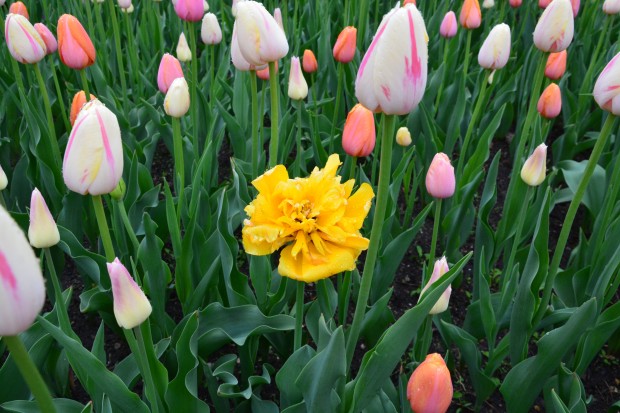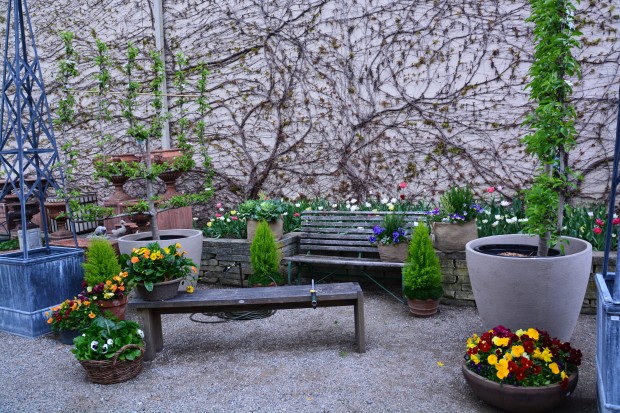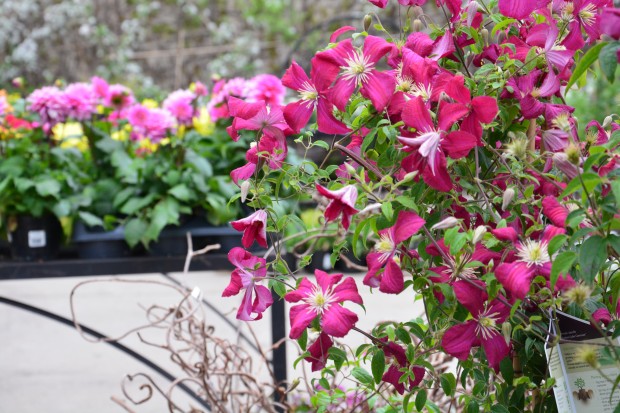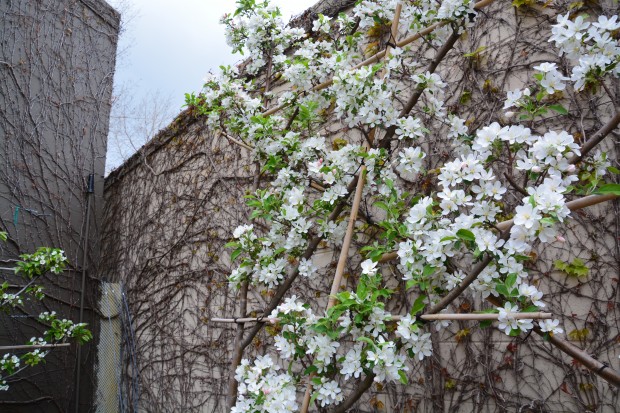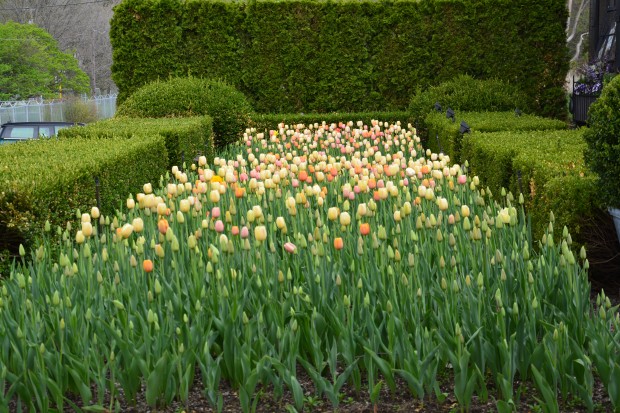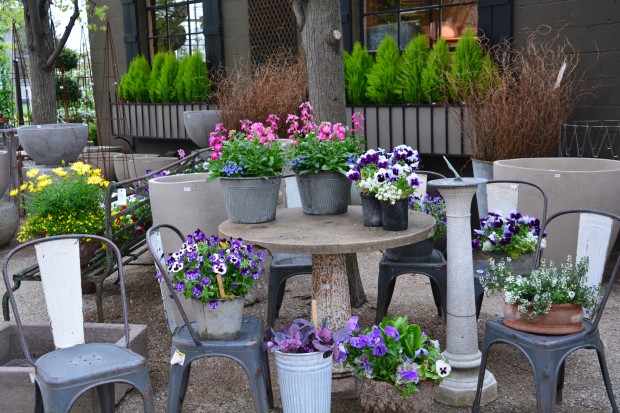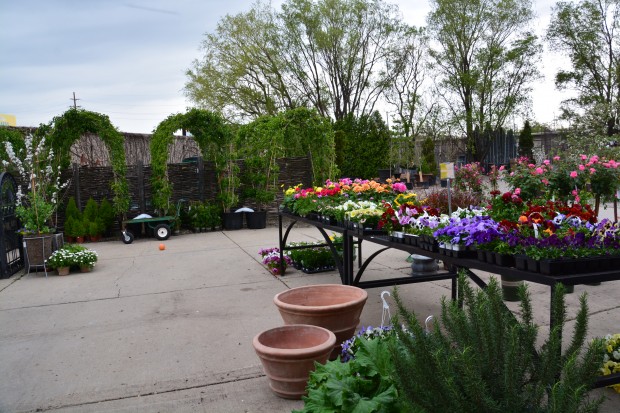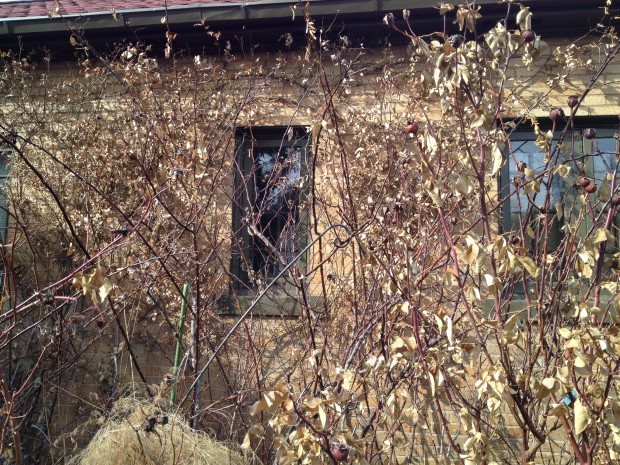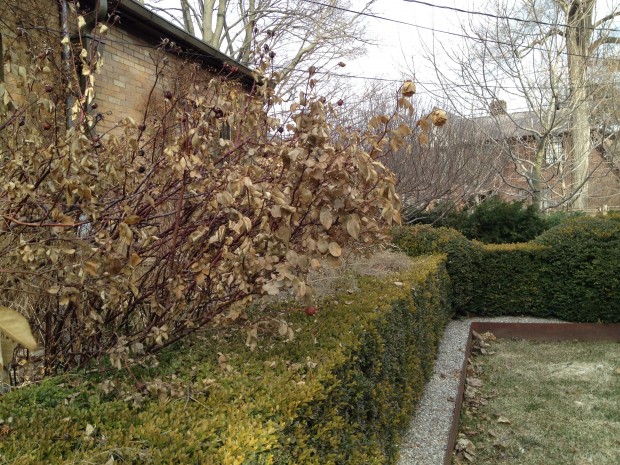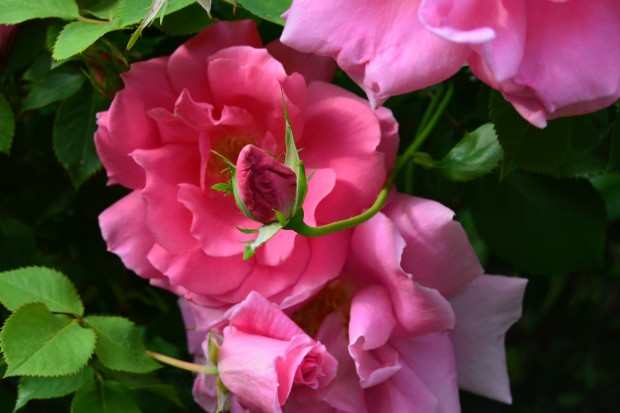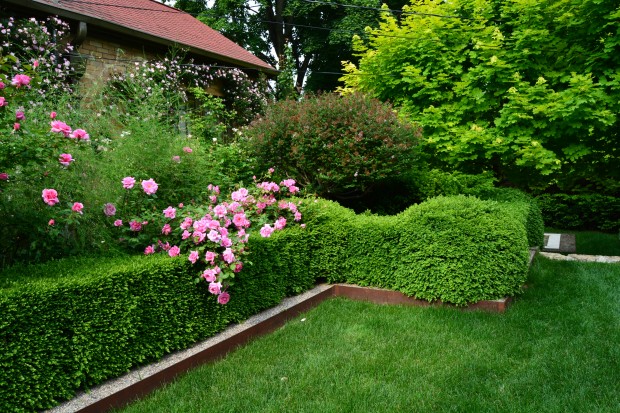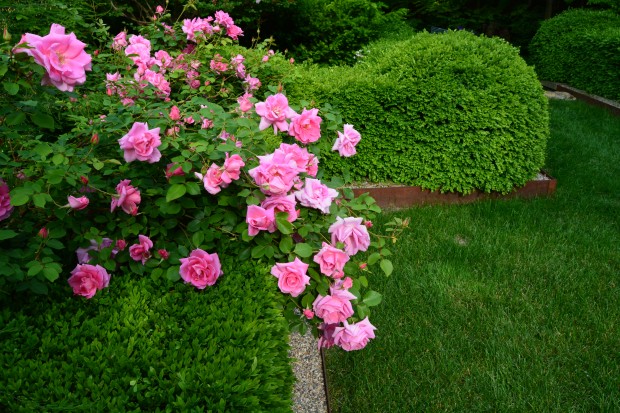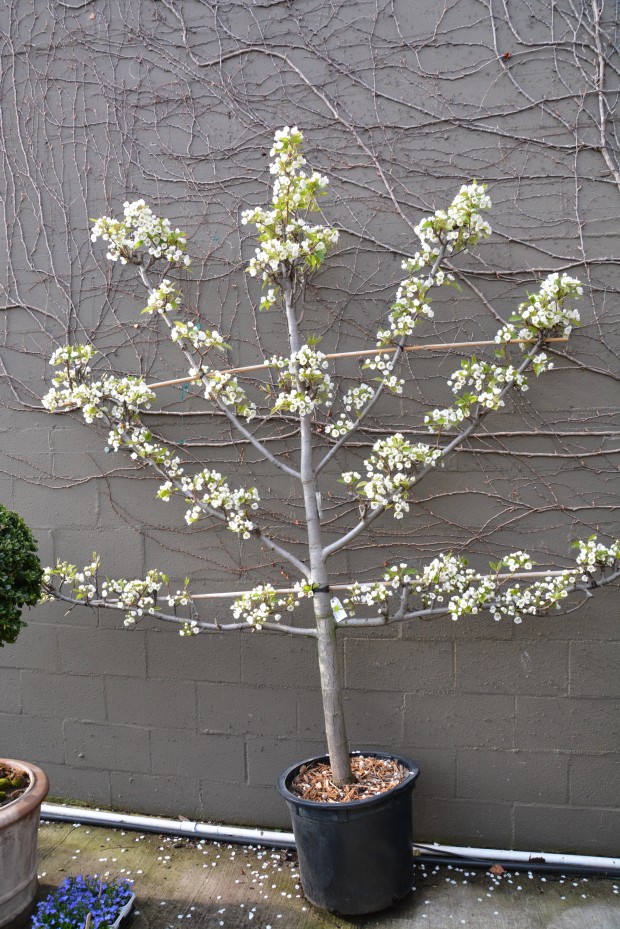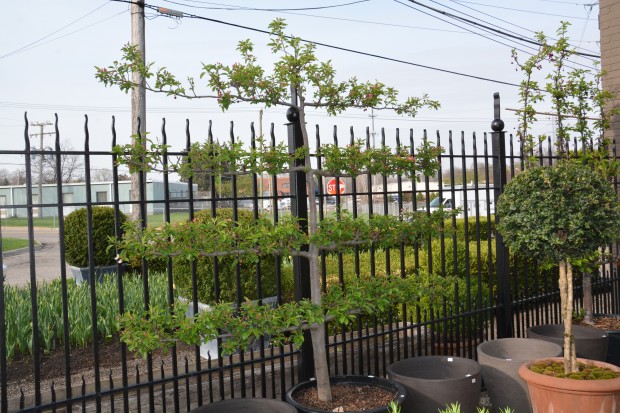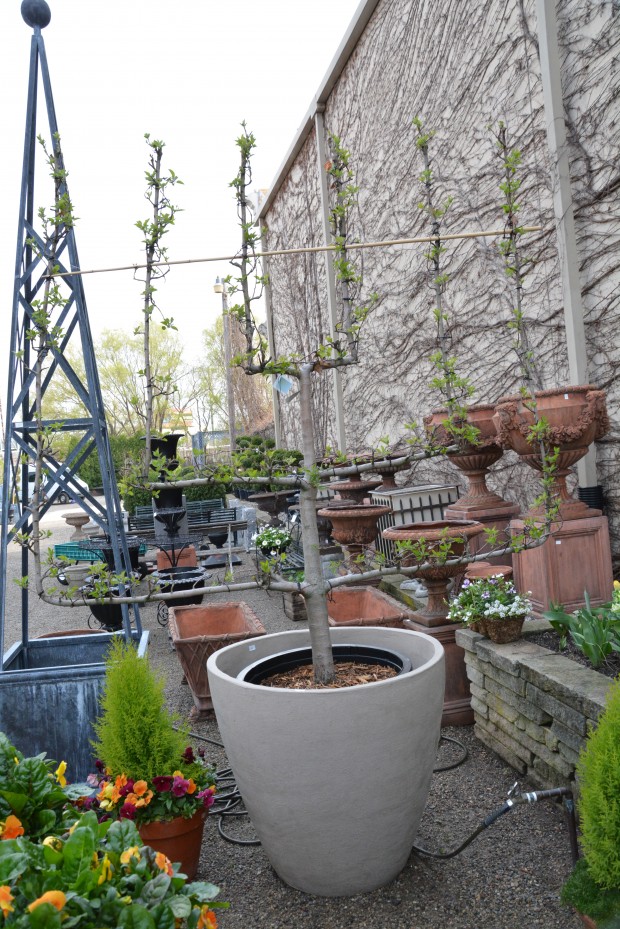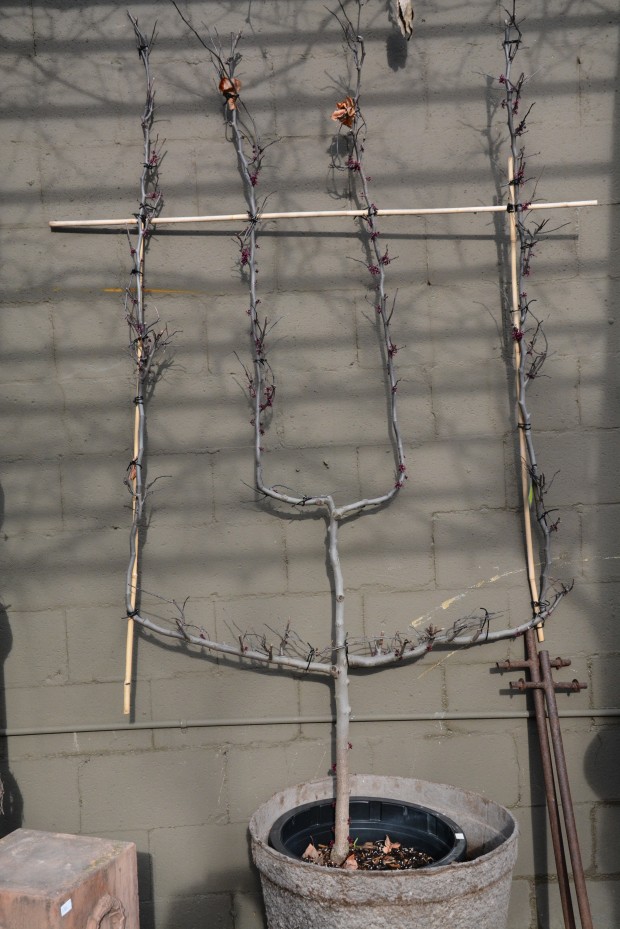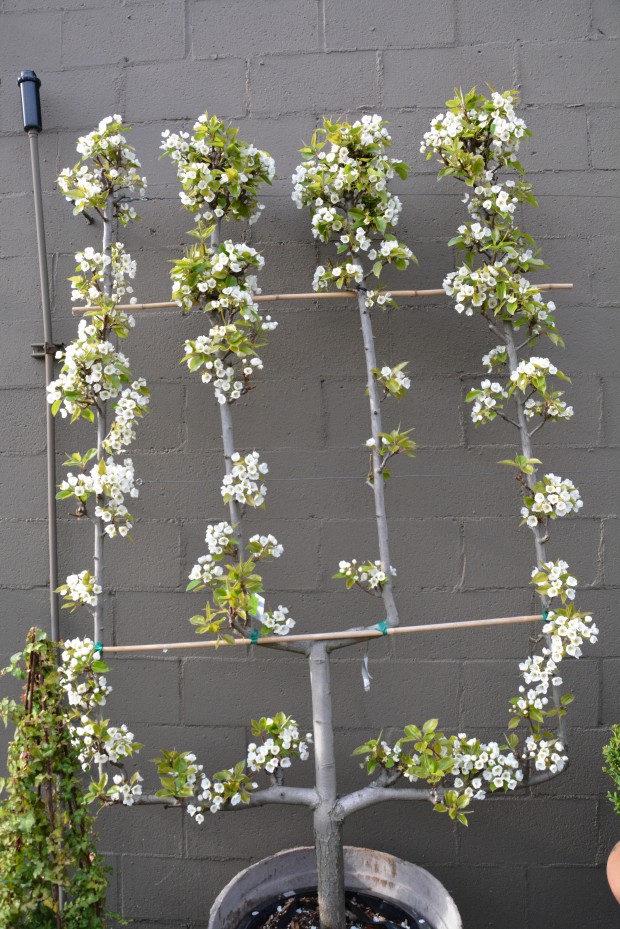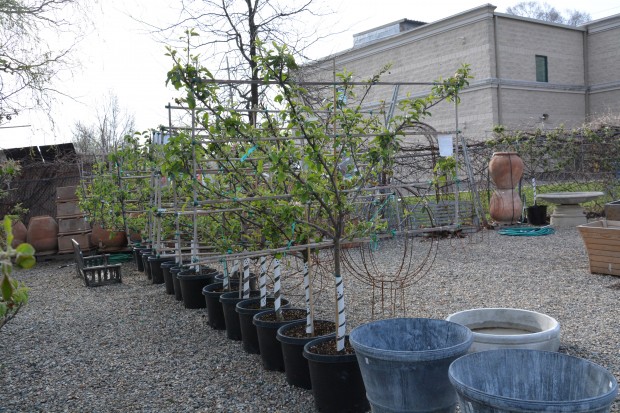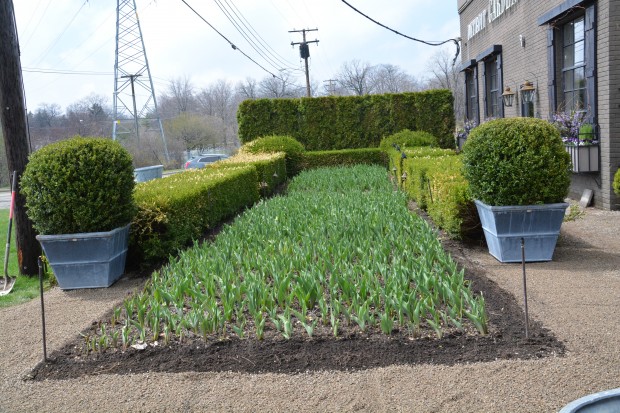 Anyone who gardens has a fascination with what I call living color. The red of tulip is a much different kind of red than red represented by paint. Color infused by life and light is a special kind of color. It is no wonder that flowering plants are prized by gardeners. Given the winter we just endured, the first signs of color are so welcome. And no plant is more about the joy of color in the spring than tulips.
Anyone who gardens has a fascination with what I call living color. The red of tulip is a much different kind of red than red represented by paint. Color infused by life and light is a special kind of color. It is no wonder that flowering plants are prized by gardeners. Given the winter we just endured, the first signs of color are so welcome. And no plant is more about the joy of color in the spring than tulips.  I plant a mass of tulips at the shop every year. It is the perfect opportunity to explore shape and color relationships, as every plant looks just about the same. I A mass of all one color is striking in certain settings, and in small groups. A mix of color and shapes makes for a more painterly approach.
I plant a mass of tulips at the shop every year. It is the perfect opportunity to explore shape and color relationships, as every plant looks just about the same. I A mass of all one color is striking in certain settings, and in small groups. A mix of color and shapes makes for a more painterly approach.
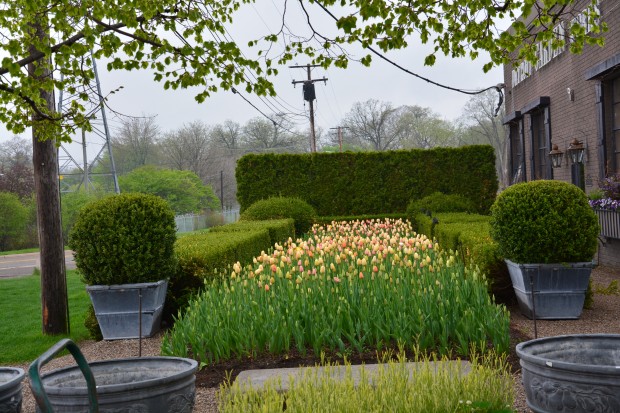 A good mix begins with a selection that blooms at slightly different times. A very early and a very late tulip will never keep one another company. Tulips with related bloom times means that the display of color will evolve over time. From the moment a bud appears to the time of bloom is about a month. The tulips in the foreground of this picture are behind those in the background for a simple reason. They are close to some fairly large lindens that shade them in the early part of the day.
A good mix begins with a selection that blooms at slightly different times. A very early and a very late tulip will never keep one another company. Tulips with related bloom times means that the display of color will evolve over time. From the moment a bud appears to the time of bloom is about a month. The tulips in the foreground of this picture are behind those in the background for a simple reason. They are close to some fairly large lindens that shade them in the early part of the day.
 The next step in choosing a mix has to do with height. A mix all at the same height means that each individual flower is not in view. A mix of heights puts the color both up, middling, and down. Once a tulip comes in to bloom, the flowers continue to grow. In a cool spring, the stems will grow to their full height, and stay in bloom quite a while. In a hot year, the stems will be short and the flowers short-lived. Given our fairly cool temperatures, this should be a good year.
The next step in choosing a mix has to do with height. A mix all at the same height means that each individual flower is not in view. A mix of heights puts the color both up, middling, and down. Once a tulip comes in to bloom, the flowers continue to grow. In a cool spring, the stems will grow to their full height, and stay in bloom quite a while. In a hot year, the stems will be short and the flowers short-lived. Given our fairly cool temperatures, this should be a good year.
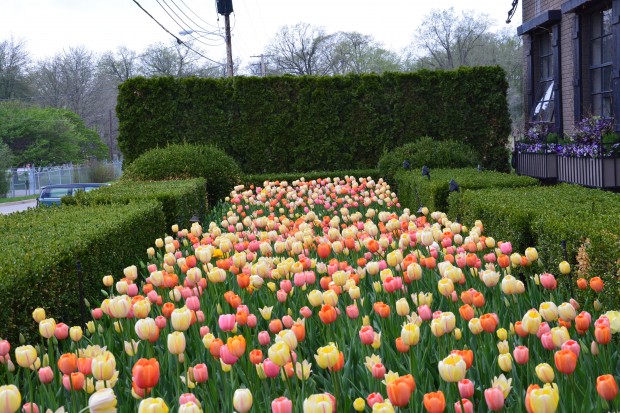 Choosing the colors is the most difficult part. No one has the luxury of picking a tulip for its color any other way than via pictures in a catalog. A picture of a tulip is not remotely like the real thing. Solid red tulips can be orange red, or bluish red. Or red violet. Or red with streaks of yellow. Many tulips are comprised of several different colors overlaying one another. The edge of the petals may contrast in color with the body of the petal. Other tulips may be streaked or spattered with another color.
Choosing the colors is the most difficult part. No one has the luxury of picking a tulip for its color any other way than via pictures in a catalog. A picture of a tulip is not remotely like the real thing. Solid red tulips can be orange red, or bluish red. Or red violet. Or red with streaks of yellow. Many tulips are comprised of several different colors overlaying one another. The edge of the petals may contrast in color with the body of the petal. Other tulips may be streaked or spattered with another color.
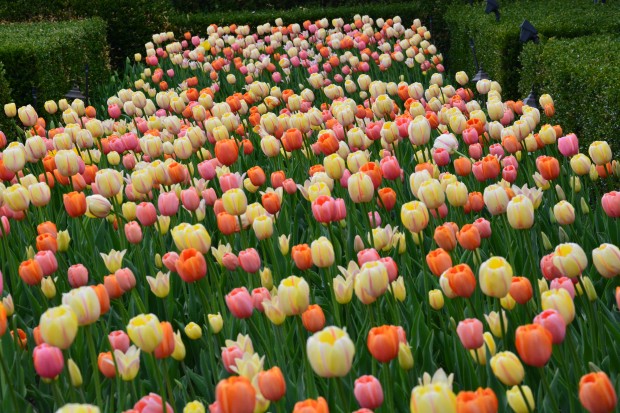 Tulips that have multiple color tones are great for creating a visually satisfying and complex display. This softly colored mix is comprised of tulips with subtle color variations. Choosing colors that are analogous means they are closely related on a color wheel. The overall effect from a distance is monochromatic, but up close, there are many variations. This tulip mix is easy on the eyes, but not sleepy. I like looking at pictures of tulips on the John Sheepers website. The colors represented are fairly true, and they include a written description of the colors as well. No catalog records what the inside of a tulip looks like. That warm and sunny day that mature group of tulips opens their petals wide and flat is a beautiful day indeed.
Tulips that have multiple color tones are great for creating a visually satisfying and complex display. This softly colored mix is comprised of tulips with subtle color variations. Choosing colors that are analogous means they are closely related on a color wheel. The overall effect from a distance is monochromatic, but up close, there are many variations. This tulip mix is easy on the eyes, but not sleepy. I like looking at pictures of tulips on the John Sheepers website. The colors represented are fairly true, and they include a written description of the colors as well. No catalog records what the inside of a tulip looks like. That warm and sunny day that mature group of tulips opens their petals wide and flat is a beautiful day indeed. 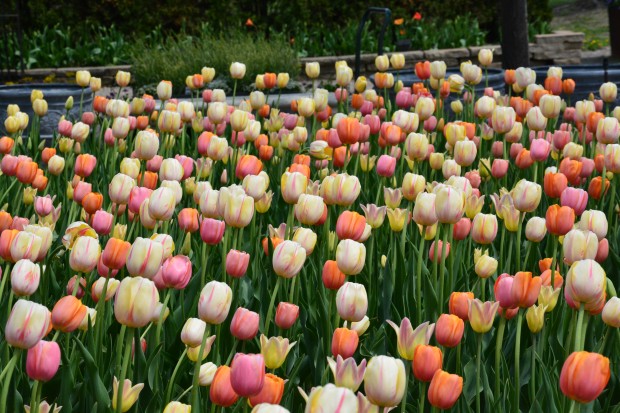 I do take pictures of tulips on my own, for reference. We do a different scheme every year-why not. They are all beautiful. It is surprisingly easy to put colors together that are jarring and ill suited to one another. I do see a fair number of red and yellow tulips planted together. A mix is best with a minimum of 3 colors. The color rhythm is better, and less choppy. Red yellow and dark purple-an exciting scheme. Red yellow and orange, a closely related celebration of hot color. Red, yellow and pink is a little softer, especially if the pink is a littler paler than the others. Pale yellow, watermelon red and the palest pink is a completely different look than the aforementioned schemes. Red, yellow and white is striking by way of contrast.
I do take pictures of tulips on my own, for reference. We do a different scheme every year-why not. They are all beautiful. It is surprisingly easy to put colors together that are jarring and ill suited to one another. I do see a fair number of red and yellow tulips planted together. A mix is best with a minimum of 3 colors. The color rhythm is better, and less choppy. Red yellow and dark purple-an exciting scheme. Red yellow and orange, a closely related celebration of hot color. Red, yellow and pink is a little softer, especially if the pink is a littler paler than the others. Pale yellow, watermelon red and the palest pink is a completely different look than the aforementioned schemes. Red, yellow and white is striking by way of contrast.
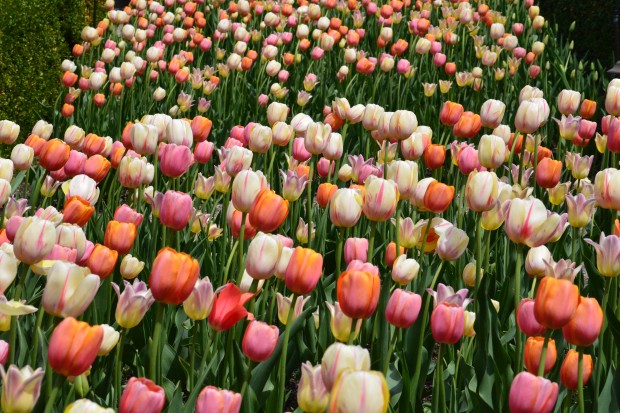 A color mix also influenced by the ratio of one color to another. 25% yellow, 25% red, and 50% white may read like polka dots. a 33-33-33 blend is an even blend. A 50-50 mix with one big patch of another color is energetic and catchy.
A color mix also influenced by the ratio of one color to another. 25% yellow, 25% red, and 50% white may read like polka dots. a 33-33-33 blend is an even blend. A 50-50 mix with one big patch of another color is energetic and catchy.
As for this yellow tulip with anemone petals-I have no idea what it is called, or where it came from. But I am glad to have it as part of the mix.
